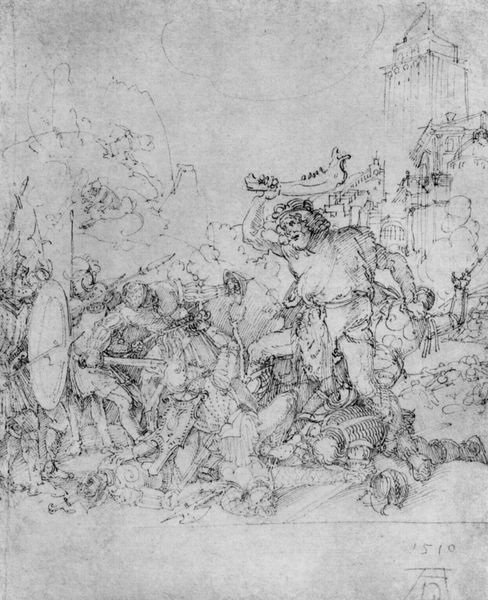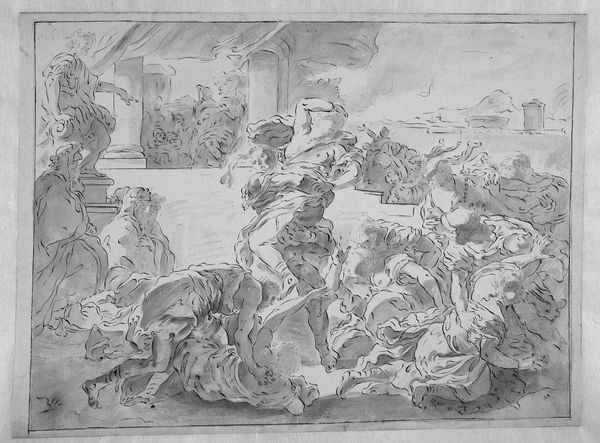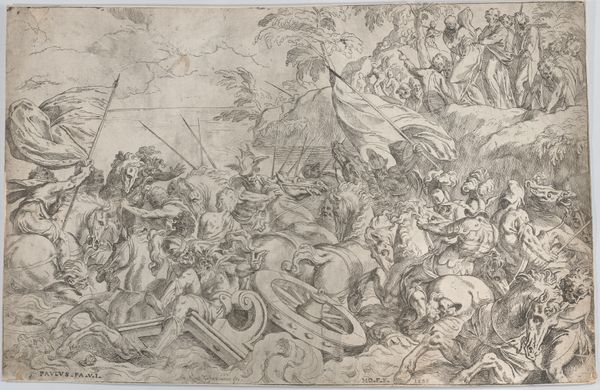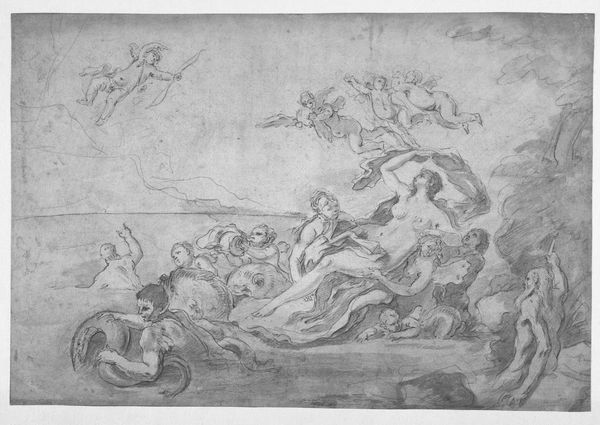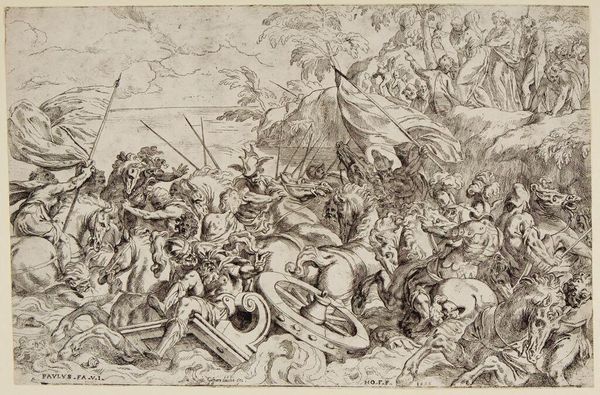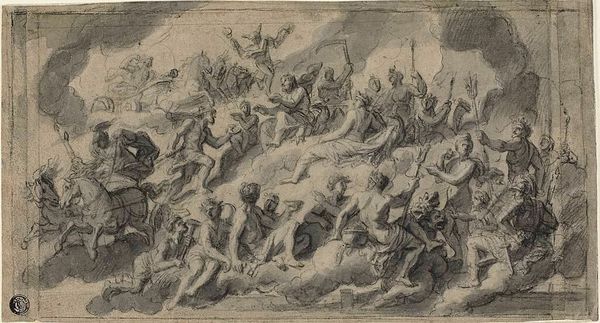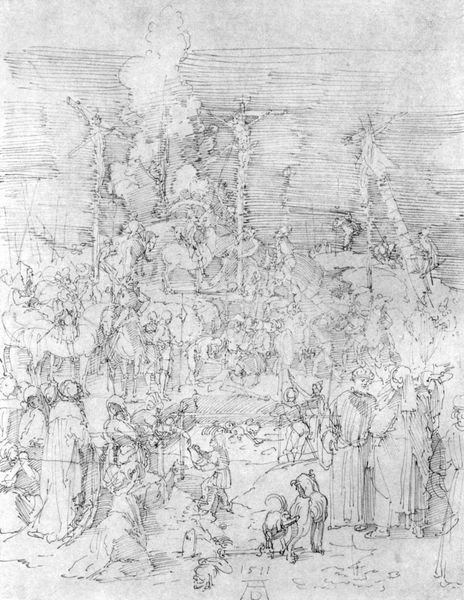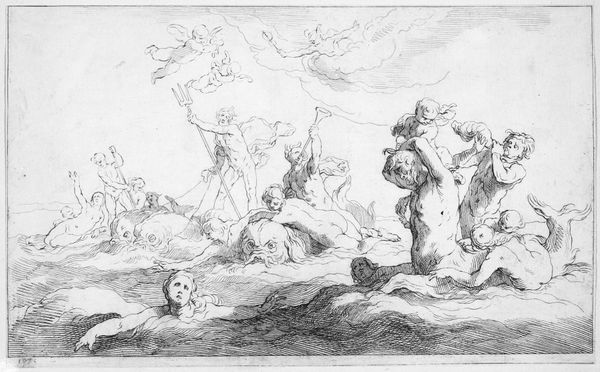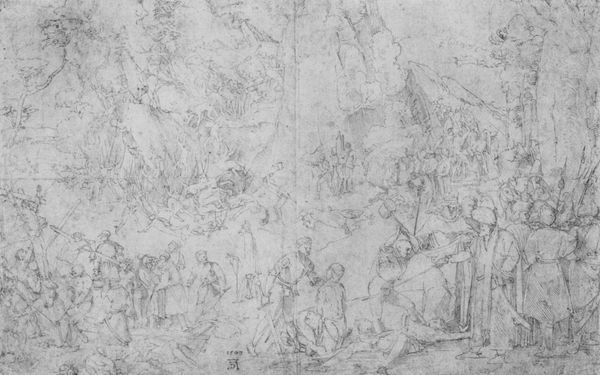
drawing, ink
#
drawing
#
baroque
#
figuration
#
ink
#
line
#
genre-painting
#
history-painting
Dimensions: 214 mm (height) x 169 mm (width) (bladmaal)
Curator: This drawing, housed here at the SMK, is entitled "Battle scene with cavalry and infantry" and is attributed to Domenico Brandi. While the dates surrounding its creation are broad, it's believed to have been made sometime between 1684 and 1736. Editor: My first impression is…chaos. It's incredibly dynamic. Look at the frenzied lines and the figures all tangled together. It's less a depiction of heroic warfare and more a study of… violence, frankly. I’m curious, what were the intended public and political roles of depicting battle in art at this time? Curator: That's a very good point. During the Baroque period, battle scenes often served multiple purposes. Yes, they commemorated victories and served as propaganda. But consider also, the art market was rapidly evolving. Works like these were purchased to display one's educated appreciation for martial prowess, associating their family with such virtues. This battle isn't about *that* battle but about the idea of conflict, itself. Editor: Right, it is this general impression of combat, almost generic—one could easily imagine Brandi using stock figures, and the repetition of shapes definitely evokes an assembly-line feel. This wasn't created in a vacuum; what do we know about the kind of materials Brandi was using here and where they came from? Was he innovating or following convention? Curator: He was working within conventions. He used ink on paper; a very common and cost-effective medium. While we don't have specifics on *this* artwork’s production, artists at the time sourced materials through complex supply chains, linking the artist's studio to global networks of trade. How the ready availability of the ink and paper enabled artists like Brandi to be highly productive in their time. Editor: So, considering all these points, what makes this work compelling beyond being a depiction of a generic brawl with figures? Curator: For me, it lies in the line work, in how it so successfully captures the energy and drama of the scene. This ink drawing provides us a vital key into a pivotal moment in European history. Editor: Absolutely. It’s this raw energy combined with the stark materiality that makes it so immediate and arresting to modern viewers. Curator: Yes. It reminds us of the enduring nature, for better and worse, of such representations, how battles always found ways of being part of culture.
Comments
No comments
Be the first to comment and join the conversation on the ultimate creative platform.
